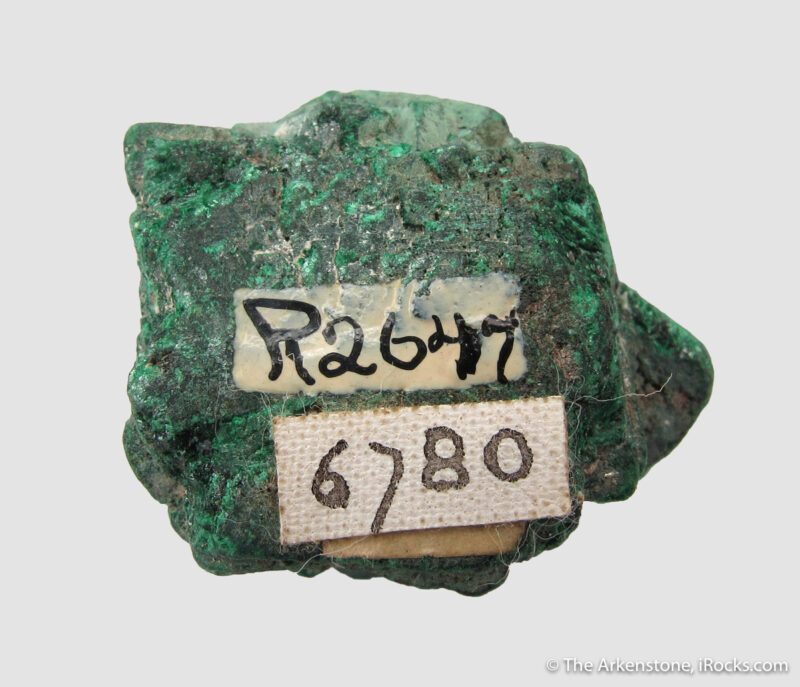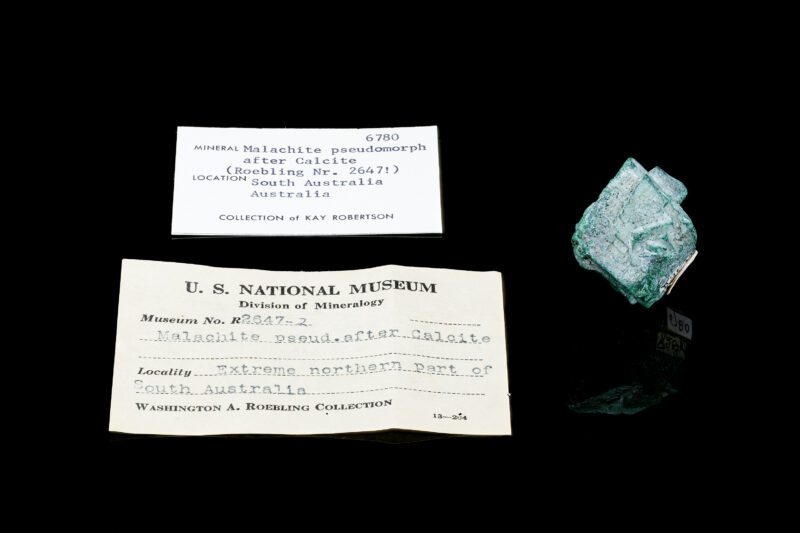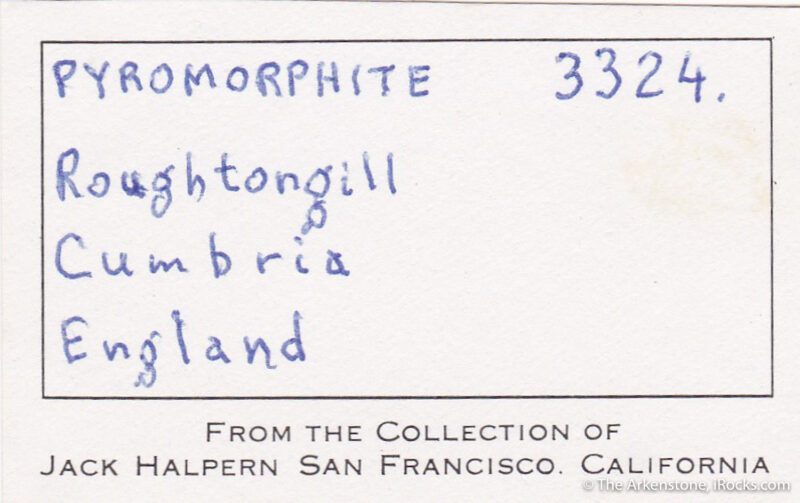Labeling and Cataloging Your Mineral Collection
Labeling & Cataloguing Your Collection | iRocks
Collecting rocks and minerals is often a life-long pursuit – which means that, after a time, most collectors build an extensive collection of specimens. The challenge then becomes how to organize, label, and catalog these specimens – without detracting from the display quality of the specimen, itself.
Historically, those experienced at collecting minerals and rocks might catalog their collections manually – gluing each specimen with a small label or scrap of paper which corresponded to another sheet of paper, with more in-depth information. The problem with this method is that labels are notoriously separated from their specimens – rendering the time and effort spent on creating these records moot.
In this day and age, it’s easy to create a comprehensive digital record, from which you can extract detailed information for use in creating labels for displaying or showcasing your specimens when needed – though the information outlined below can also be applied to creating a physical logbook or catalog (just be sure to note the beginning and ending specimen identifiers on the cover).
Let’s start with the basics. At a minimum, you’ll want to mark each rock or mineral specimen with a unique identifier (generally, an assigned number) that will correspond to that specimen’s information. Though historically written on a small scrap of paper and affixed with glue (white craft or school glue is most often recommended), this numerical identifier can also be quickly and easily applied directly to the specimen, using an extra fine water-based paint pen – or, depending on the chemical make-up of the specimen, an extra fine oil-based paint pen – both readily available online, or at your local craft store.

Two historical labels affixed to a malachite specimen. The painted label is from the Smithsonian National Museum of Natural History and the paper label is from Kay Robertson.
Though there are many methods of cataloging, the right option for you is simply the one that you will find easy to update and maintain! Digital options include the use of a master document or spreadsheet (a basic Google or Excel spreadsheet is perfect, though you can also use a simple Word document) – or you could stick to traditional methods, such as the use of a standard paper journal, depending on your comfort level. There are also some inexpensive cataloging software available, such as this one, which are designed specifically for collecting minerals and rocks and can handle an extraordinary amount of data – ideal for those with large collections.
Once you’ve decided on your method, and your specimen has been assigned an appropriate identifier, you should record this number in your catalog. You can then log other identifying details and information which provide insight into your specimen’s unique value and history.
Some suggested details to include in your catalog are :
Identifier – This is the most important item to note, as it will tie the physical specimen to its record.
Date Acquired – When did you first obtain this specimen?
Method of Acquisition – Was this specimen field-collected? Donated? Purchased?
Source – If not collected in the field, where or who was this specimen acquired from?
Cost – What did you pay for this specimen?
Value – What is the specimen’s estimated value at the time of catalog entry?
Mineral Name & Variety – Note the easily visible, dominant species – as well as any significant rare species.
Features – This is a helpful category for noting features such as twinning, pseudomorphs, associations with other minerals, etc.
Dimension & Weight – Noting the physical measurements and attributes of the specimen can be very useful in future identification, should your records be mislaid or confused.
Locality – Include as much detail as possible regarding the place of origin, including country, state, county, or district – as well as the name and level of the mine, if known. Ideally, your notes would enable another collector to search for and locate the area of origination.
Provenance – Recording the history of a specimen is of paramount importance. This creates a record of the past ownership of the specimen, where the specimen has been, and preserves information for future collectors after yourself. Make sure to keep any label that came with a specimen.
The next step is simply creating a label that can be used to provide information to those viewing your specimen, when on display. When cataloging via a digital method, creating labels is as easy as selecting, copying, and pasting information for printing on cardstock. For those using an analog method, you will need to create labels by hand or enter the information into a Word document for printing purposes. For detailed information on creating and printing fine display labels, this excellent article by Mindat is a great resource.
What to put on your labels:
At a minimum, note the name of the species and the locality – though, ideally, a label will also provide the mineral name and variety, if known. Other information may be included or excluded, at your discretion – however, it is best to keep your labels neat and consistent (and not to overburden the casual viewer with unnecessary details).
If creating a digital catalog, or using a database designed for collecting minerals and rocks, it can be helpful to include photos of your specimens, alongside each record or catalog entry. This will help you avoid any potential confusion, in the event that your specimen is somehow separated from both its identifier and label.
Remember – an unidentified or poorly cataloged collection may not be assigned the value and appreciation it deserves, in the event that it is inherited, donated, or otherwise passed on to another collector. In order to maintain the integrity and value of your collection, it is important to keep a well-documented and accurate record of your finds. Do so, and you’ll be pleased to know that your hard work continues to hold value and offer enjoyment for generations to come.
And one last word of advice. Start cataloging your collection sooner than later. On many of your specimens you’ll have information in your memory. Make sure that this information will survive.
For more helpful information on collecting minerals and rocks, or for assistance in photographing your collection for documentation, contact the experts at iRocks, today!

